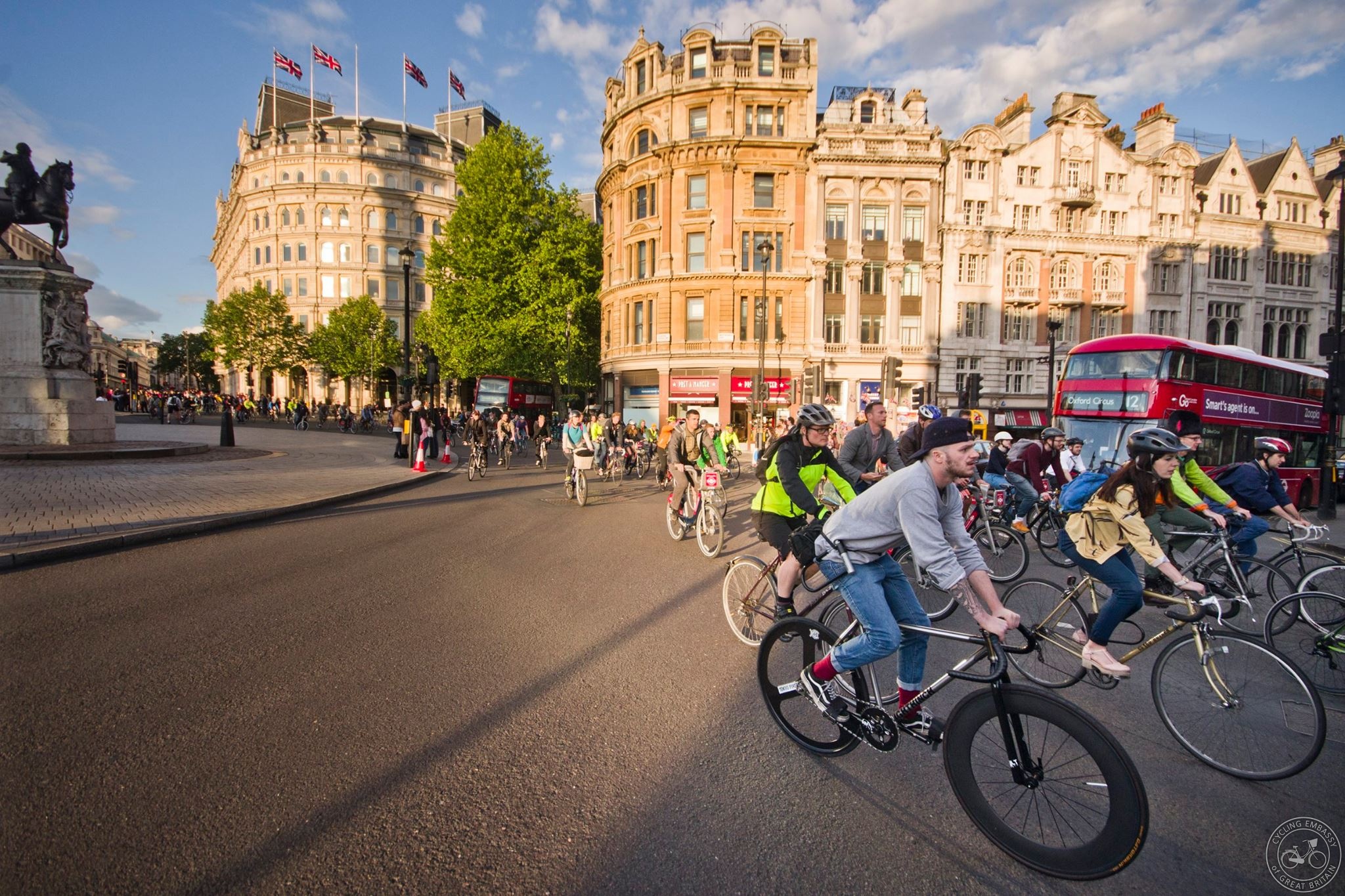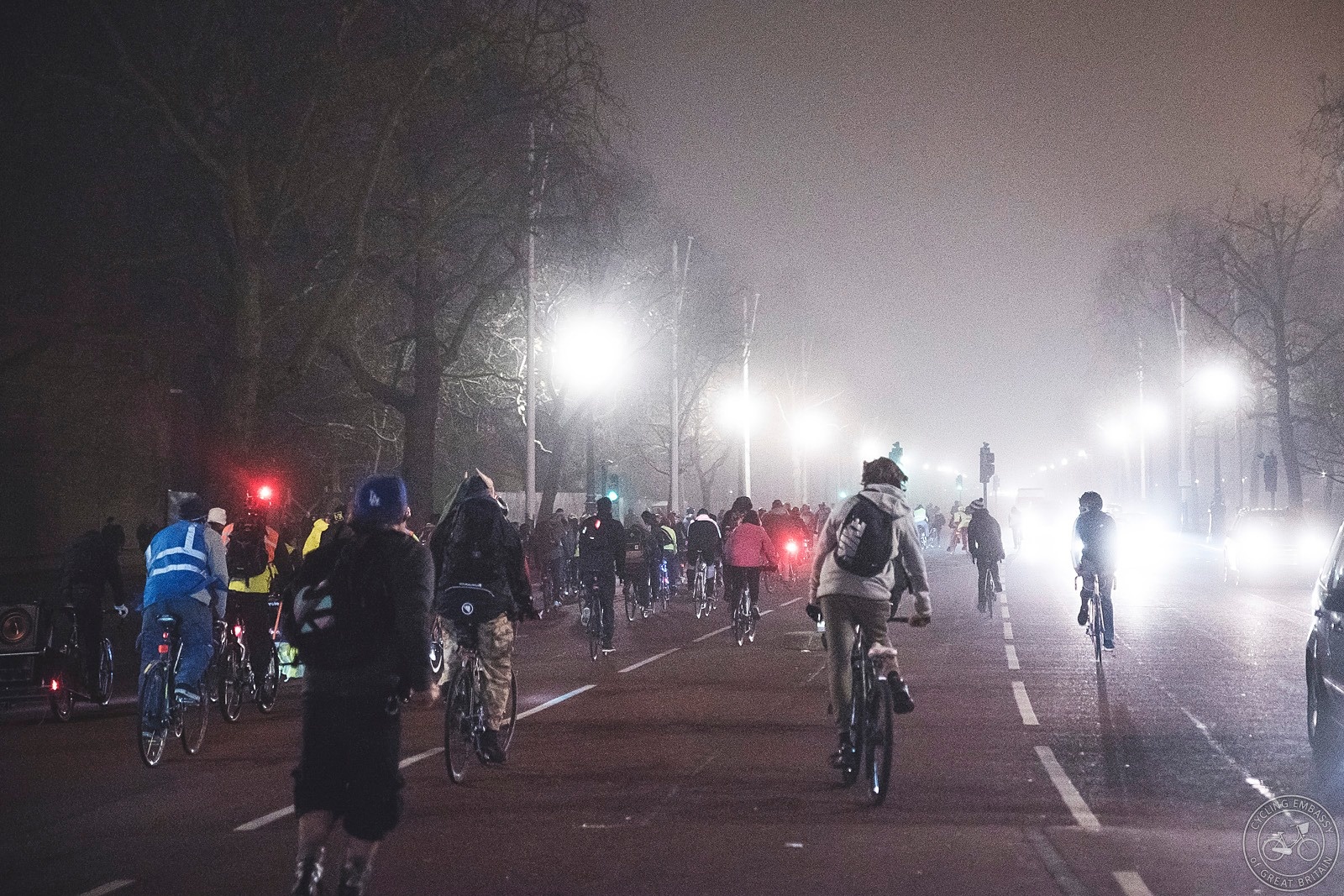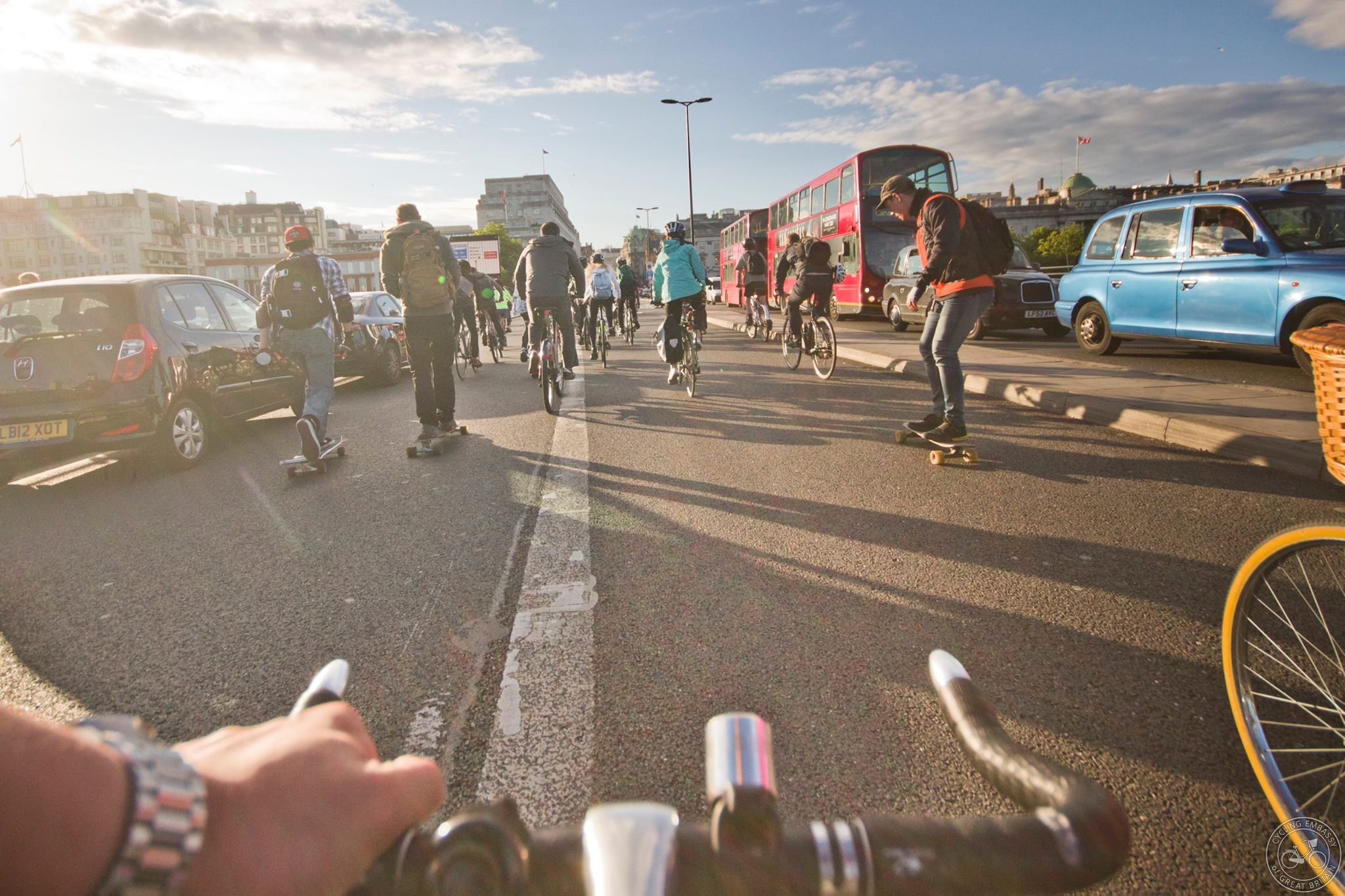Guest Post - Some Observations on Play at Critical Mass
This guest post is about the renovation of London's Critical Mass by an inspiring new generation of cyclists. Pearl Ahrens studies at UCL and tweets at PearlMRAhrens.
Photos by Lee Pelayo.
Critical Mass is a mass bike ride which occurs in big cities around the world on the last Friday of every month. At the starting point under Waterloo Bridge, teenagers show off their wheelies in a circle of stones in front of the National Theatre – these are the Wheelkids, skilled riders of BMXs and mountain bikes, or bikes with impressively thick tyres. There are a few bicycle soundsystems, playing mainly trap. The security guards, frustrated, hurry cyclists of all backgrounds off the different-coloured paving stones, signifying the land belonging to the National Theatre.

As Critical Mass moves off, it becomes clearer that each of these groups of riders moves in different ways. The Wheelkids are confident and fast, pulling wheelies for minutes at a time. They cycle erratically, darting sideways across the road, not straight ahead with the rest of the ride. Additionally, they barely ever crash into each other, working well as a self-regulating group, like skaters at a skatepark.
A few times at Critical Mass I’ve met the owner of a well-established DIY bikespace in Hackney called Cycle Pitstop. Once, in Bethnal Green, he gestured at many of the Wheelkids, referring to them as 'my guys', telling them to ‘keep out of trouble’ - trouble meant stealing from Sainsbury’s. He explained that Critical Mass was important for social cohesion between the Wheelkids, because it’s a city-wide ride, ‘there’s no ends here, just friends’. He pointed out that cycling keeps them away from other, potentially harmful, vices. This is corroborated by the generally polite and energetic tone of the Wheelkids, who look out for each other.
When interacting with other riders, however, there can be problems. One time, as the ride progressed down Cornhill, a Wheelkid brushed past an older man dressed in Tibetan flags whilst speedily overtaking him, causing him to wobble then shout. He, like many older participants in Critical Mass, cited ‘danger’ as his main provocation to anger – danger of the Wheelkid injuring him or themselves. Although this is statistically unlikely, the largely car-free moving oasis which Critical Mass creates can fool its participants into turning against each other, and losing sight of the main danger to all cyclists.

Interactions with traffic often escalate during the practice of ‘corking’. Corking means blocking the path of a motorist coming out of a side road by placing your bike sideways in front of a vehicle’s bonnet (see here). The job of the corker is to convince the motorist to stop driving, using both words and a physical block. If this doesn’t work and the motorist keeps driving into the cork, fights often start.
According to a convention which has developed over the years, the self-designated corkers ride up front and stop where needed, then let the whole Critical Mass pass until they end up at the very back, then bolt it to the front to do the same thing over again. In this way corking is solitary work, during which friends get misplaced and all concentration floods into placing your body directly in harm’s way.
However, the Wheelkids don’t cork quite the same it’s traditionally been done on Critical Mass. Rather than blocking roads on the left-hand side of the lane with an individual rider, the Wheelkids tend to stop oncoming traffic in groups of 10-15 with all their mates, granting Critical Mass all four lanes of an arterial road.
The way the Wheelkids interact with traffic is central to the BikeStormz trend: bold and fearless, they ride into oncoming traffic whilst balancing on one wheel. But more pertinently than that, they ride in groups, thereby turning corking into a necessarily collective task. Some older riders complain that this needlessly winds up motorists and gives Critical Mass a bad name, however this criticism ignores both the norm of aggression which results from corking and the new ways that play is being utilised to keep the ride safe from vehicles.
Perhaps the anger at the Wheelkids, and the way they do the work of stopping vehicular traffic, is caused by a difference in the connotations which each group ascribes to Critical Mass: what the Wheelkids see as play, the older cyclists see as leisure. The former could be defined more widely as a set of activities including (but not limited to) riding fast, shoplifting, and showing off, whereas the latter is likely to be relaxing – closer to watching a game than playing it.
Neither view is incorrect, which is fortunate because there would be no way to effect change if one were wrong. But viewing Critical Mass as play, as the Wheelkids do, turns it from just an obstructive single-lane protest about cars into an alternative vision of what we can use our cities for, whilst still retaining a portion of original anti-roads spirit.
Alongside many other initiatives encouraging using streets for play, Critical Mass’s new generation are proposing a safer distribution of road space by just taking it.

One such initiative is the series of Capture The Flag games organised in semi-public spaces across London. The games highlight the shady private management of the ostensibly public areas by playing large-scale running-around games in them.
And there’s the Playing Out projects, which close a residential street to traffic for the day so that children can play in it. These temporary road closures are now offered by 40 councils all over the UK as officially-sanctioned events.
Even ‘Kiddical Mass’, an event riffing off Critical Mass but with a family-oriented slant, happens in London every few months. Frequented by cargo-bike riders, Kiddical Mass is automatically playful, not in the daredevil way of the Wheelkids but because kids in general are excellent at playing when given the chance.
What unites all these events are the sparks of conversations, involving both adults and children, about safety or security in the places we live. In open squares, on main roads, and in terraced streets, there are debates to be had about how young people share the space with traffic, what constitutes danger, and how we form communities. With this context in mind, conceiving of Critical Mass as creating a space to play in doesn’t reduce its overtly political nature, it just makes it more fun.
